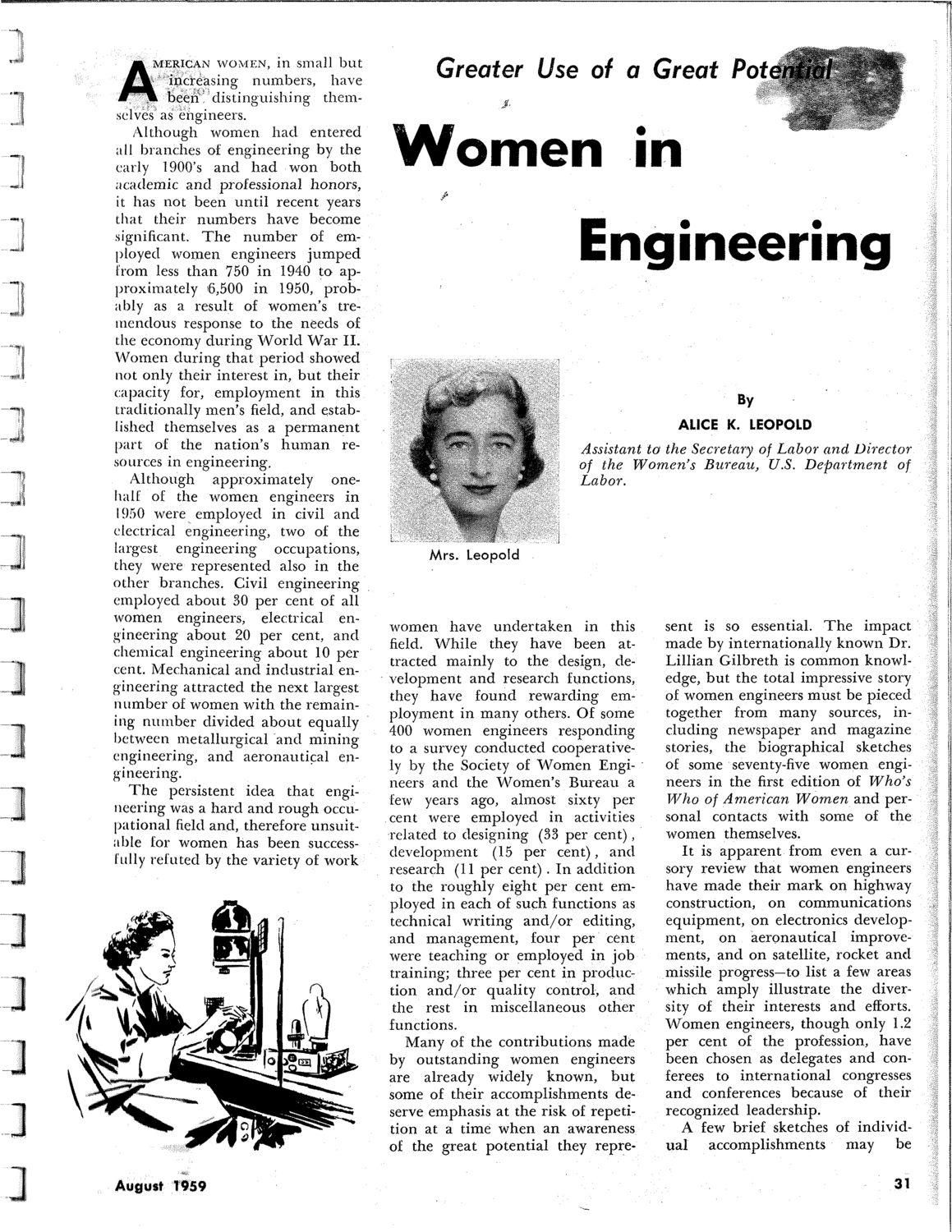| |
| |
Caption: SWE - News Clippings Book
This is a reduced-resolution page image for fast online browsing.

EXTRACTED TEXT FROM PAGE:
in small but increasing numbers, have k been distinguishing themselves as engineers. Although women had entered all branches of engineering by the early 1900's and had won both academic and professional honors, it has not been until recent years that their numbers have become significant. The number of employed women engineers jumped from less than 750 in 1940 to approximately 6,500 in 1950, probably as a result of women's tremendous response to the needs of the economy during World War II. Women during that period showed not only their interest in, but their capacity for, employment in this traditionally men's field, and established themselves as a permanent part of the nation's human resources in engineering. Although approximately onehalf of the women engineers in 1950 were employed in civil and electrical engineering, two of the largest engineering occupations, they were represented also in the other branches. Civil engineering employed about 30 per cent of all women engineers, electrical engineering about 20 per cent, and chemical engineering about 10 per cent. Mechanical and industrial engineering attracted the next largest number of women with the remaining number divided about equally between metallurgical and mining engineering, and aeronautical engineering. The persistent idea that engineering was a hard and rough occupational field and, therefore unsuitable for women has been successfully refuted by the variety of work A MERICAN WOMEN, Greater Use of a Great Potential ** Women in Engineering By ALICE K. LEOPOLD Assistant to the Secretary of Labor and Director of the Women's Bureau, U.S. Department of Labor. Mrs. Leopold women have undertaken in this field. While they have been attracted mainly to the design, development and research functions, they have found rewarding employment in many others. Of some 400 women engineers responding to a survey conducted cooperatively by the Society of Women Engineers and the Women's Bureau a few years ago, almost sixty per cent were employed in activities related to designing (33 per cent), development (15 per cent), and research (11 per cent). In addition to the roughly eight per cent employed in each of such functions as technical writing and/or editing, and management, four per cent were teaching or employed in job training; three per cent in production and/or quality control, and the rest in miscellaneous other functions. Many of the contributions made by outstanding women engineers are already widely known, but some of their accomplishments deserve emphasis at the risk of repetition at a time when an awareness of the great potential they repre- sent is so essential. The impact made by internationally known Dr. Lillian Gilbreth is common knowledge, but the total impressive story of women engineers must be pieced together from many sources, including newspaper and magazine stories, the biographical sketches of some seventy-five women engineers in the first edition of Who's Who of American Women and personal contacts with some of the women themselves. It is apparent from even a cursory review that women engineers have made their mark on highway construction, on communications equipment, on electronics development, on aeronautical improvements, and on satellite, rocket and missile progress—to list a few areas which amply illustrate the diversity of their interests and efforts. Women engineers, though only 1.2 per cent of the profession, have been chosen as delegates and conferees to international congresses and conferences because of their recognized leadership. A few brief sketches of individual accomplishments may be 31 August 1959
| |